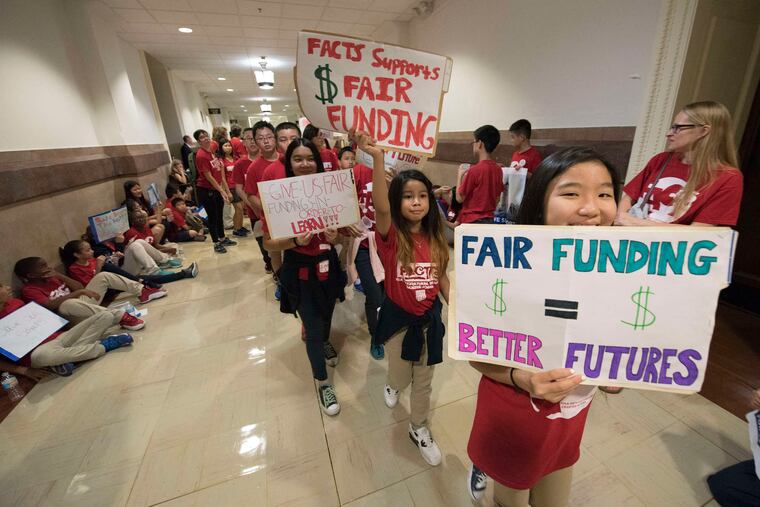Choice is not enough when it comes to education | Editorial
The bedrock belief of those championing choice is that parents deserve options for where they send their children to school, and that parents know what’s best for their child. Too often, choice for its own sake is treated as the goal, rather than quality education options.

More than two decades after the charter law in Pennsylvania was passed, school choice remains the center of a lively but largely unresolved debate -- one that has taken on new shapes.
“School choice” used to be synonymous with vouchers, but that is no longer the case, at least in Pennsylvania. Now, the state offers a range of public education options: district schools, brick and mortar charter schools, cyber schools, private and parochial school scholarships publicly funded via a tax credit program. Across Pennsylvania, 137,000 students are enrolled in charters and another 50,000 go to private or parochial schools using the tax credit program. In all, the state spends $2 billion on these alternatives to traditional public schools.
The bedrock belief of those championing choice is that parents deserve options for where they send their children to school, and that parents know what’s best for their child. For some lawmakers, parental choice is a civil rights issue, insuring that a child’s zip code doesn’t dictate the quality of his or her education.
Sound arguments, but too often, choice for its own sake is treated as the goal, rather than quality education options.
If choice alone were enough, that would make Philadelphia -- with more charter schools and other offerings than any other city in the commonwealth -- the epicenter of academic excellence and equity.
But despite academic progress, Philadelphia district schools have a ways to go. Just as some district schools are high quality and some are troubled, many charter schools excel, while many fall short. Cyber charters, according to recent studies, post “overwhelmingly negative” results in student performance.
Not only have there been no reforms to the original law that created these choices, but there are few longitudinal studies tracking student achievement and outcomes across all types of school options. For example, fewer high school graduates in Pennsylvania are heading to college now than 15 years ago. What’s behind that decline, and what role, if any, do school choices play?
As for equity, a recent provocative body of research suggest that choice has led to schools increasingly segregated by race, ability, and language. Earlier this year, the Education Law Center found that traditional charter schools are failing to ensure equitable access for all students, with high levels of segregation in charters.
That echoes recent research from across the country suggesting that more choice has led to more segregation, which is reshaping the choice debate yet again. One reason is that parents don’t have equal access to accurate and understandable tools and information needed to make informed choices.
The school choice model is based on free market principles. That’s both good and bad news. Bad news because education is more than a commodity to be advertised on billboards. It’s a public good – and legally compulsory. The upside is that parents as “consumers” have the power to demand more: better choices, more equitable funding, and more tools for measuring and understanding school performance.
Parents should make it clear, especially to lawmakers, that choice alone is not enough. They deserve to have choices that provide the best education to their children.